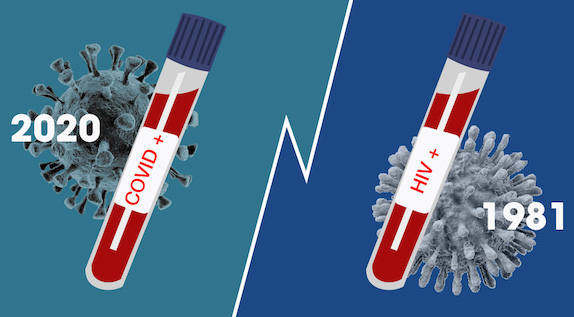
As part of its “Getting to Zero Strategy” launched in 2011 to end the HIV epidemic by 2030, UNAIDS initiated the global 90-90-90 target in 2014 (90 percent of people living with HIV (PLHIV) know their HIV status, 90 percent of diagnosed PLHIV on Anti-Retroviral Therapy (ART) and 90 percent of PLHIV on treatment have suppressed viral loads). To meet this ambitious goal, governments began to roll out robust HIV testing, linkage to and retention in care programmes.
Sadly, the novel corona virus, which caused serious disruption to HIV services, also created fear in PLHIV who sometimes have underlying medical conditions and have an increased risk for severe illness if they contract COVID-19.
This fear and its effect on PLHIV cannot be ignored. Is the new virus moving people away from in-person clinical management to self-care management? Is it increasing mental health challenges? In short, how is it affecting PLHIV? Let’s hear from someone who is happy to share her experience.
This conversation has been edited for length and clarity.
Q: Please tell us how Covid-19 has impacted your life?
J: COVID-19 has changed my life for the worse. I’ll start by saying something that most women can relate with: COVID-19 is the only thing that has made me leave home without putting on lipstick. On a more serious note, I’ve been shielding,[1] and it has not been easy; I feel like a prisoner in my own home. COVID-19 is dehumanising. We humans are social beings; without a social life, I get depressed; and the news is also depressing, all gloom and doom. \It was hard to receive several calls and messages from the National Health Service (NHS) and support services offering to bring me food. Though they were trying to help, I actually felt more vulnerable. Besides, I felt I was losing the little freedom that I had left: to go out and buy food, take a walk, feel fresh air and breeze on my face.
Q: Do you feel the need to protect yourself more because you are living with HIV?
J: Definitely. COVID-19 came at a very critical time for me: my CD4 count had dropped to dangerously low levels- below 200- and my viral load was in the thousands meaning I needed to change to a new ART combination. It was challenging; I couldn’t miss hospital appointments as I needed blood tests to monitor how I was doing with the new Anti-Retro Virals (ARVs). However, once I braved it and attended my first hospital appointment, things became easier; I am no longer scared of hospital appointments. The other big issue is that I am diabetic and know that this puts me at a higher risk of catching Covid-19 and/or of dying if I do. All of this makes me feel very vulnerable and I take shielding seriously. There must be many others like me on Highly Active Antiretroviral Therapy (HAART), the side effects of which puts us at risk of developing conditions such as diabetes, coronary heart diseases etc.
Q: Do you find yourself drawing parallels between HIV and COVID-19?
J: Honestly, no. Although they are both viral infections, I’d rather have HIV than COVID-19. HIV has not created in me the level of fear that COVID-19 brought to me and the entire world. Besides, HIV is not easily transmitted. People still believe scary myths about HIV/AIDS mainly because of stigma and ignorance but an HIV diagnosis is no longer a death sentence. With biomedical advances, PLWHIV can live a normal life. Look at me, I was diagnosed in 2001 and started ART immediately. I lead a healthy and productive life and expect to live long. COVID-19 is proving different: unpredictable; preventing it is not as straight forward as preventing HIV, you feel exposed to Corona virus wherever you go and whatever you do. Sadly, COVID-19 is sweeping away HIV support services. It seems the world is forgetting that HIV still exists, and decades of research has failed to find a cure or vaccine.
Q Do you think the NHS needs to do more to shield/help you?
J I don’t know if there is any more support the NHS can provide to shield PLWHIV. However, more help is needed to prevent the scraping of support in the name of COVID-19. HIV/AIDS medical professionals understand the terrible life-changing impact of an HIV/AIDS diagnosis; we need support for life. It’s possible to live a healthy life but, decades of experience have shown that this can be achieved only with continuous medical and emotional/psychological support to ensure, in particular, that people on ARVs remain compliant, maintain an undetectable viral load and reduce transmission rates as U=U (Undetectable equals Untransmissible). Additionally, HIV services are needed to provide education, prevention and other support services.
HIV medical appointments are now set to become by telephone/video calls. Our fear of the digital will prevent most of us from trusting this new system. I know for a fact that most people over 50 (particularly migrants, refugees, asylum seekers or BAME) are not ICT literate. They are not confident enough, uncomfortable talking about medical issues over telephone/video calls. Personally, I don’t feel the support and compassion via telephone/video consultation. How well can you support or feel for someone you cannot see? Body language is key in communication.
Lastly, the stigma surrounding HIV/AIDS makes most PLWHIV paranoid. I want my medical information to remain confidential and its disclosure should remain my decision and mine alone. For example, the HIV Clinic recently emailed a medical report to me; it freaked me out. I was shocked and shaking. In the name of COVID-19, they did not bother to seek my consent. If hackers infiltrate the NHS database, how difficult will it be to hack into a patient’s email? I told the Clinic to never email me confidential information again. I should mention that you can opt for a face- to- face appointment if you have no COVID-19 symptoms and are happy to respect COVID-19 safety measures. Talk to your clinic about your options.
Q: How was lockdown for you?
J: Please refer to question 1. Although shielding measures have been eased, I am not relaxed. I can’t take chances though I miss family and friends’ hugs terribly. Months of shielding have conditioned my mind. They say habit is second nature. Outside my front door is a scary world, a threat to my already vulnerable life. Will I ever feel normal again? Only God knows but I hope that with more support, especially mental health support, I can overcome the terrible fear created by COVID-19. L’espoir fait vivre comme disent les Français (Hope gives life as the French say).
As a last word, PLHIV should remember that in this COVID19 new world order, we need a united front to fight for continuous support. Stay well and safe everyone.
[1] Shielding: UK government’s programme for people deemed most at risk of becoming seriously ill from the novel coronavirus which advises them not leave their homes and minimise all face-to-face contact until at least the end of June.
]]>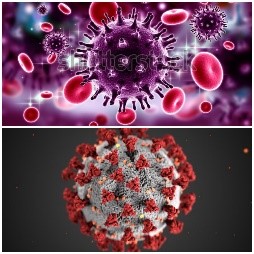
The HIV virus was discovered almost 40 years ago and the fear that it created then still lingers today especially as an HIV vaccine and cure remain elusive. Sadly, the world is, yet again, battling a relatively new pandemic, Covid-19, and, as not much is known about the nature of the SARS-COV-2 virus, the uncertainty and global panic it continues to generate is eerily reminiscent of the early years of the HIV epidemic.
Unlike HIV which, was, initially, ignored by the Reagan administration and wrongly labelled the “gay plague” and Gay-Related Immune Deficiency (GRID), Cov-2 received immediate attention: governments imposed quarantines, nationwide lockdowns and curfews and closed borders in order keep the virus out of their countries. In no time, the novel virus brought the world to a standstill.
In spite of all the measures taken, nations soon began to grapple with community transmission. However, responses were immediate: they built emergency hospitals in days and transformed large-scale public venues into isolation centres. Additionally, financial and other resources were swiftly diverted to tackle the pandemic with other chronic and life-threatening illnesses, including HIV, relegated to the back burner.
Spot the similarities
Does Covid-19 bear any similarities to the two most recent human corona virus outbreaks- SARS (Severe Acute Respiratory Syndrome – 2002 to 2004) and MERS (Middle East Respiratory syndrome) which first appeared in 2012? More importantly, how does the novel virus compare to HIV, another virus that created mass hysteria in the early 80s and what lessons have we learnt from the HIV/AIDS epidemic that we can effectively implement to fight coronavirus? In this issue, we seek to examine the similarities between Cov-2 and HIV.
Allow me to state from the onset that the Cov-2 and HIV are very different in that “[t]hey are transmitted differently. They replicate differently. They cause disease differently” . Nonetheless, some parallels can be drawn from the world’s experience of both.
The COV-2 virus causes Covid-19. Just like HIV which causes AIDS, it appeared suddenly and spread rapidly all over the world. The availability, affordability and reliability of testing, crucial to the control of any virus spread, was a serious challenge when AIDS first emerged. That challenge has, again, resurfaced as countries struggle to increase Covid-19 testing capacity.
The mass panic, virus-related stigma, misinformation, discriminatory behaviours associated with both are all too familiar: As Covid-19 is still a very new, little understood disease, infodemics continue to fuel public fear and suspicion with misinformation on social media further worsening the confusion. Sadly, almost forty years after HIV reared its ugly head, public health specialist continue to burst myths and misconception, dispel ignorance and misinformation about the virus. And, one must not fail to mention the negative effects of the various conspiracy theories linked to both viruses.
The stigma associated with infectious diseases poses a huge challenge to behavior change, essential to the prevention of the spread of both viruses, and this cannot be ignored. The extreme stigma that the people who contracted HIV in the 80s experienced remains fresh in the memories of long-term HIV survivors especially as, four decades later, HIV-related stigma remains highly prevalent across the globe. Covid-19-related stigma is not that extreme; however, in some parts of the world, those who have the disease as well as those who have recovered from it experience shame and stigma. And just as is the case with HIV, the fear of shame and stigma prevents some people from seeking medical help.
And let’s not forget the name, blame and shame game: in the 80s, gay men and Haitians were blamed for spreading HIV. Today, people of Asian descent, particularly the Chinese, have experienced both physical and verbal attacks because Cov-2 “originated” from China. The world heard the American President, Donald Trump, repeatedly refer to the virus as the “Chinese virus” or “Kung flu” during press conferences.
The outbreak of both viruses uncovered cracks in health systems, global and national leadership challenges as well as disturbing corrupt practices, all of which are harmful to public health.
COVID-19: a rights, social and economic crisis
Corona virus, just like HIV, has further exposed entrenched inequalities and injustices in our countries as both disproportionately affect the vulnerable and marginalized. Key populations remain vulnerable to HIV just like racial and ethnic minorities are at increased risks of getting Covid-19 or becoming serious ill when infected with the virus. Decades of work on HIV has shown that an intersectoral, rights and evidenced-based approach is required to beat pandemics. HIV has made a lot of progress: effective treatment exists, transmission risks and the effects of the social determinants of health are well understood. The same cannot be said for Covid-19, a very new disease.
As we cannot afford to repeat the mistakes of the past, we must swiftly address all forms of inequalities, injustices and discrimination populations vulnerable to HIV and, now, Covid-19 experience. These populations must be identified; responses must be designed to ensure they are well protected, respond and recover better from pandemics.
Let us Leave no one behind. Join hands we us as PositivelySharing as we support the vulnerable Living with HIV.
[1] This HIV/AIDS Specialist Explains Its Similarities — And Differences — To COVID-19; https://www.forbes.com/sites/coronavirusfrontlines/2020/04/22/this-hivaids-specialist-explains-its-similarities—and-differences—to-covid-19/#512dfd3549f8
]]>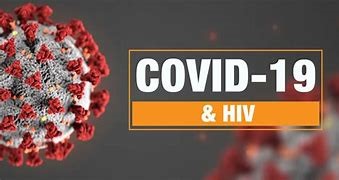
HIV became a major global concern in the 1980s and remains a serious public health threat today. The burden of the epidemic varies considerably between countries and regions: sub-Saharan Africa, home to 12% of the world’s population, accounts for 72% of the global HIV burden- 25.6 million of the 36.9 million People Living with HIV (PLHIV) worldwide (UNAIDS, 2019) live in that region;[i] Eastern Europe and Central Asia have the fastest-growing regional epidemic in the world[ii] while the Philippines, which has the fastest-growing epidemic in the western Pacific, recorded an HIV incidence increase of 174 percent between 2010 and 2017(WHO).[iii]
Although the world’s current focus is on stopping the spread of Covid-19, with about 1.7 million new HIV infections in 2019 (UNAIDS)[iv] , we cannot and must not forget the AIDS epidemic which the world has been fighting for about 40 years. Both viruses must be fought at the same time.
Sadly, HIV seems to have faded into the background with reports from all corners of the world detailing sharp declines in public health responses because personnel and resources are being diverted to combat Corona virus and the lockdown imposed by many governments to halt its transmission is affecting people in different ways.
How is the Covid-19 response distressing PLHIV? Disruption in HIV service delivery and daily routine, travel restrictions, food insecurity and other instabilities are exacerbating vulnerabilities. Some are experiencing interruption in treatment and they, as well as the 13.4 million who are not accessing treatment (UNAIDS),[v] risk passing on the virus.
Undoubtedly, interruptions in ART can be fatal. If PLHIV contract COVID-19 while off treatment, they could become seriously ill. This scenario could be even more scary in sub-Saharan Africa where over 9 million are not accessing ARVs (UNAIDS)[vi] and health systems are under-resourced. Disruption in treatment can also result in drug resistance and even death.
It should be stated that a recent study conducted in South Africa found “approximately twice the risk of Covid-19 death in people with HIV irrespective of viral suppression or ART use. The study also mentions an “increased risk of Covid-19 death associated with other risk factors, such as older age [ten times more likely] or diabetes”[vii] [between four and 13 times more likely]. There should be concern for PLHIV who have co-morbidities.
COVID-19 lockdown
Sadly, from Africa to Asia, the stories emerging are alarming: hunger compromising adherence to medication, fear of disclosure to security operatives enforcing lockdown because of stigma, absence of social engagement with peers which further aggravates isolation and loneliness and, above all, the fear of getting infected by COVID.
In South Africa, the country that has the world’s highest HIV rates, some PLHIV are trapped in areas where they cannot get their medication and, at some point, Gauteng province reported that nearly 11,000 people had failed to collect their HIV medicine[viii].
In Uganda, the country with one of the highest rates in east Africa, people who struggle to eat avoid medicine as ARVs make them nauseous and dizzy when taken without food. And, the story is no different in India where district treatment centres could be 30 to 40 km from villages making access to treatment during the nationwide lockdown practically impossible[ix].
Spike in deaths predicted
A WHO and UNAIDS modelling group has predicted over 500,000 extra deaths from AIDS-related illnesses, including tuberculosis, in sub-Saharan Africa from 2020–2021 if the disruption in health services and ART continue for up to six months. Last year about 470,000 people died of AIDS-related illness in that region. Additionally, a disruption of this length of time would also result in a sharp increase in the number of mothers transmitting HIV to their children during pregnancy, childbirth, or breastfeeding – this will undo years of hard-won gains.
Call to action
Lockdown restrictions are being eased and a lot needs to be done urgently to repair the damage caused by the interruptions experienced at various levels. We cannot and must not sit idly by and watch Corona virus reverse the hard-earned gains in the prevention of vertical transmission, the use of treatment as prevention, early detection of HIV through testing, immediate linkage to care etc. In sub-Saharan Africa, only 64% or 16.4million of the estimated 25.7 million PLHIV were on treatment in 2018. The lives of these 25.7 million people living with HIV matter and this is an opportunity to help. In particular, the lives of those not accessing treatment matter as they need to be linked to treatment and care.
If you are interested in joining hands with us to halt preventable deaths, needless HIV transmission, drug resistance and contribute to the reduction of hunger among PLHIV please get in touch with us at info@positivelysharing.
[i] Nweze, J., Eke, E., Nweze, I. (2017) HIV/AIDS in sub-Saharan Africa: Current status, challenges and prospects. https://www.researchgate.net/publication/316598262_HIVAIDS_in_sub-Saharan_Africa_Current_status_challenges_and_prospects
[ii] AVERT, https://www.avert.org/hiv-and-aids-eastern-europe-central-asia-overview
[iii] https://www.rappler.com/nation/93839-who-ph-response-hiv.
[iv] https://www.unaids.org/en/resources/fact-sheet
[v] https://www.unaids.org/en/resources/fact-sheet
[vi] https://www.unaids.org/en/resources/fact-sheet
[vii] HIV and TB increase death risk from COVID-19, study finds—but not by much; https://www.sciencemag.org/news/2020/06/hiv-and-tb-increase-death-risk-covid-19-study-finds-not-much
[viii] https://www.theglobeandmail.com/world/article-the-covid-19-pandemic-could-be-devastating-for-battles-against/
[ix] India’s focus on coronavirus leaves TB and HIV patients adrift; https://scroll.in/article/958400/invisible-crisis-tb-and-hiv-patients-left-adrift-in-indias-focus-on-coronavirus
]]>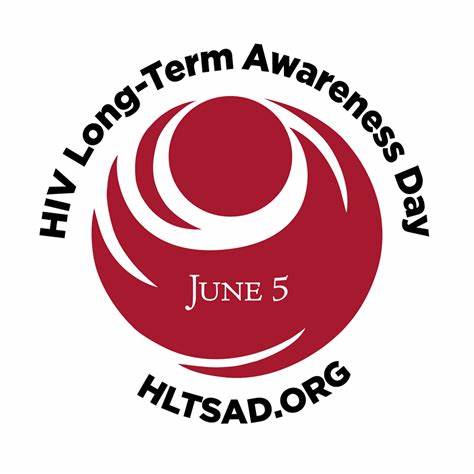
LTS HIV Long-Term survivors: few facts
-People who have lived with HIV for many years are often called Long-Term HIV Survivors;
-HIV Long-Term -Survivors Awareness Day (LTHSAD) is observed on 5 June because the AIDS epidemic officially began on 5 June 1981;
-Effective HIV treatment was launched in 1996;
-Pre-HAART LTS (Highly Active Anti-Retroviral Therapy) refers to People Living with HIV (PLHIV) before effective HIV drugs were launched;
-Post-HAART LTS refers to PLHIV for at least ten years and diagnosed after 1996;
-Young adults who acquired HIV at birth and have been living with HIV for twenty to thirty years are also long-term survivors.
HIV Long-Term Survivors
As the world celebrates its 6th annual HIV Long-Term Survivors Awareness Day (HLTSAD) to honour and recognize the contributions of those living the longest with HIV, let’s examine what we can learn from them.
People-living with HIV who got their diagnosis in the throes of the AIDS epidemic of the 1980s and 1990s before effective treatment was found and, who have lived with the virus for 25-35 years are known as HIV Long-term HIV Survivors (HLTS). They suffered overwhelming personal losses, overcame the fear of dying at a time when thousands around them died of AIDS, experienced stigma and discrimination at its worst and lived with extreme loneliness and isolation. Sadly, the traumatic experiences of that time have left some with a set of unique challenges linked mostly to mental and physical health.
Despite this distressing past experiences, they continue to demonstrate great strength and share stories of resilience and change. The biggest change is that they are still here though some of them were given a length of time left to live decades ago. They know that HIV is no longer a deadly disease and can, therefore, teach us how to look beyond uncertainty. They prove that great strides have been made with treatment, that medications work if taken as prescribed, and they now live in an era when the virus can become “undetectable” in the blood. They are living proof that it is wrong to say that we lost an entire generation to the AIDS pandemic.
Older Adults Living with HIV (OAHIV): Few facts culled from the UNAIDS 2014 Gap Report:[1]
-More and more people over 50 are acquiring HIV: every year, 120,000 people aged 50+ acquire HIV;
-Sub-Sahara Africa accounts for 60% of all PLHIV50+ (over 2 million PLHIV50+);
-In higher-income countries, those aged 50 and older represent approximately 30% of adult PLHIV;
-12% of PLHIV50+ lived in low to middle-income countries in 2013(LMICs);
-The cause of death for PLHIV50+ isn’t AIDS but co-morbidities: Over 80% of OAHIV will have at least one age-related disease, such as cancer or arthritis; [2]
-Approximately one-third will have at least three age-related diseases; [3]
There was an estimated 5.7 million PLHIV50 +; that number is expected to increase to 6.9 million by 2020;[4]
AIDS Survivor Syndrome (ASS)
As mentioned earlier HLTS live with a host of health issues known as ASS. The term refers to a distinct set of medical and psychological symptoms they experience linked to the grief and trauma of the HIV epidemic of the 80s. Nightmares, flashbacks, poor sleep, social isolation, anxiety are some of the symptoms of this condition. Today HLTS are increasingly meeting in groups to share their stories and deal with the guilt, social isolation and other issues they experience.
COVID19: hauntingly similar?
HLTS and older people living with HIV continue to learn how to age gracefully with HIV. They grapple with comorbidities as another virus spreads rapidly across the world creating fear in all communities including that of PLHIV. Long-term HIV survivors, especially those who have tested positive to this novel virus, have reported reliving a nightmare. They contracted HIV in the 80s at the peak of the AIDS epidemic when it was considered a death sentence, survived those worst HIV years but are, once again, experiencing another global public health crisis, helplessly watching death toll rise, drawing parallels between the COVID pandemic and HIV and hopeful that, once again, they will survive yet another deadly virus.
Sadly, after living with HIV for over three decades, some have tested positive and others have, unfortunately, died of COVID19. Thankfully, so far, viral suppression is “known” to keep COVID19 at bay.
Unique challenges
Older People Living with HIV (OPHIV) could be regarded as trailblazers. However, they face other unique challenges which affects the quality of their lives and have been left feeling marginalized as governments focus on achieving the UN 90-90-90 goals of increasing the uptake of testing, ensuring linkage to treatment and achieving viral suppression. Governments need to accord more attention to the unique issues that they face.
The fear of aging with HIV and other conditions, social isolation, depression, uncertainty about the future and poverty in old age are all concerns that are all too familiar to them. They have not remained quiet but have formed groups and associations and are determined to make sure their voice is heard. Also, charities and pharmaceuticals are beginning to showing interest in their plight. Not enough light at the end of the tunnel.
[1] UNAIDS Gap Report 2014: https://files.unaids.org/en/media/unaids/contentassets/documents/unaidspublication/2014/UNAIDS_Gap_report_en.pdf.
[2] Projections of global mortality and burden of disease from 2002 to 2030. https://journals.plos.org/plosmedicine/article?id=10.1371/journal.pmed.0030442.
[3]Future challenges for clinical care of an ageing population infected with HIV: a modelling study. https://www.ncbi.nlm.nih.gov/pmc/articles/PMC4528076/.
[4] Global and regional trends of people living with HIV aged 50 and over: Estimates and projections for 2000–2020.
]]>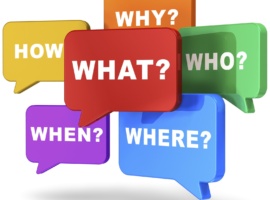
This is not the 80s
HIV is no longer a death sentence but a chronic and manageable condition because effective live-saving Anti-Retroviral Therapy (ART) prevents HIV from progressing to AIDS. Today, People living with HIV (PLHIV) lead long, meaningful and healthy lives, enjoy safe and satisfying sex, safely have children, and pursue their dreams like other people.
Furthermore, life expectancy has improved and PLHIV are increasingly living well beyond 50 years of age (PLHIV50+), HIV-related mortality has decreased tremendously, and most importantly, People with HIV who have sustained, undetectable levels of HIV in the blood cannot pass the virus on to their sexual partner.
As an HIV charity, PositivelySharing focuses on helping PLHIV self- manage their conditions. We are also keen to ensure that kith and kin and the wider community positively contribute directly, remotely or otherwise to the lives of people living with a condition that is still widely misunderstood. Our mission also includes bridging the HIV knowledge gap by promoting sexual health literacy and conversations around sexual health in general and HIV in particular.
We want to break the silence surrounding HIV and sexual health, burst myths, dispel ignorance and stereotypes by sharing information about HIV transmission modes and biomedical advances, increase knowledge about the damaging effects of stigma and discrimination, among others. Therefore, we promise to bring you news on HIV advances and treatment, stories from people living openly with the virus and lots more.
Allow us, in the first instance, to share the following with you: Today
-the AIDS epidemic has transitioned from the plague of the 80s; HIV is now a manageable condition;
-people are living with HIV and are no longer dying of AIDS;
– the acronym AIDS is less commonly used today because effective treatment prevents HIV from progressing to AIDS;
-pastors are focusing more on love and acceptance than on blaming ‘sinners;
-ARVs are provided free of charge in almost all countries in the world;
-the emergency treatment Post Exposure prophylaxis (PEP) prevents HIV infection if taken no more than three days (72 hours) or, better still, 24 hours after exposure to the HIV virus;
-Pre-Exposure Prophylaxis (PrEP) are tablets HIV negative people can take before sex to prevent themselves from becoming HIV positive; and lastly
-U=U, Undetectable = Untransmittable: a person living with HIV who has an undetectable viral load cannot transmit the virus to their partner.

Let’s create change together
Myths and misconceptions create unfounded fear and fear holds us back. However, education and awareness will move us forward. Simply put, knowledge about HIV will produce an understanding of how damaging HIV stigma and discrimination is, how harmful ignorance and misinformation can be and how important educating ourselves to change our thinking and actions is. Armed with education, we can come together to fight the disease by sharing facts and not myths and misconception, showing compassion and not indifference and by stopping the spread of rumours. All these acts will help us positively contribute to empowering our communities.
]]>
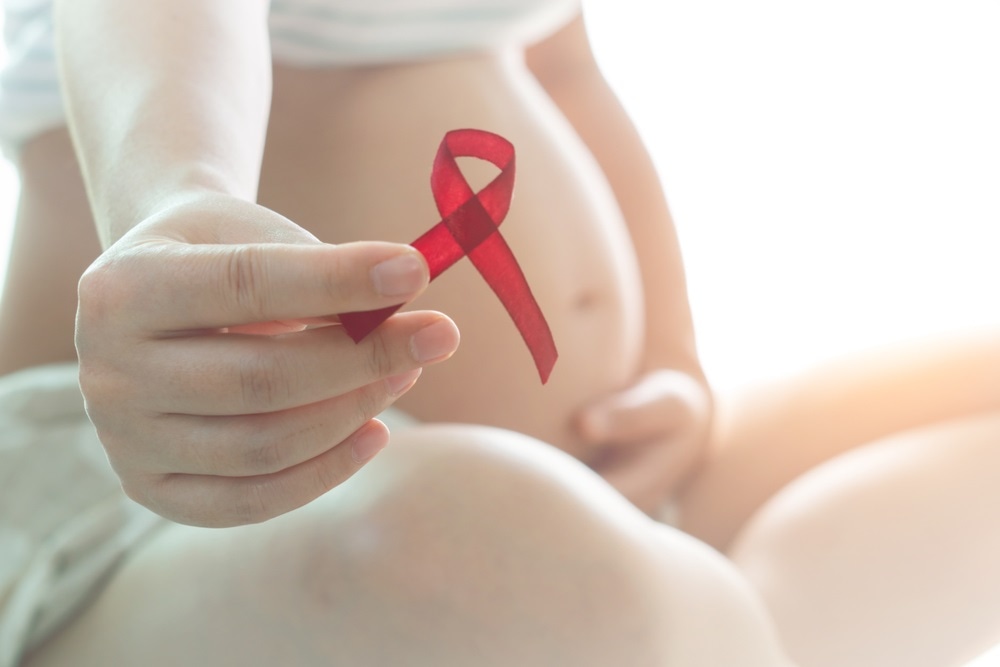
Women with HIV who are pregnant may not necessarily receive medications that are in line with current recommendations, according to a recent study of prescribing patterns.
The research suggests that doctors may be prescribing drug regimens ahead of currently published recommendations and using antiretroviral (ARV) medications they have previously seen be effective in the general adult population.
The findings come from a study conducted by researcher Kathleen Powis from Mass General Hospital for Children (MGHfC) and other members of the Surveillance Monitoring for ART Toxicities (SMARTT) study of the Pediatric HIV/AIDS Cohort Study (PHACS) network.
There has previously been little research, if any, that has compared the prescribing patterns for pregnant women with the recommendations made in national guidelines.
“Insufficient evidence of safety in pregnancy”
We studied, more than 1,500 women and found that 30 percent were prescribed drugs that had insufficient evidence of safety in pregnancy.”
The findings were published in JAMA Network Open this week.
Perinatal HIV transmission
Mother-to-child or perinatal HIV transmission can happen at any time during pregnancy and childbirth. However, this transmission can be prevented with effective interventions, and in the United States, the number of babies born with HIV has significantly declined.
According to the Centers for Disease Control and Prevention, it is not known exactly how many HIV-positive women give birth annually in the United States. A 2006 estimate suggested that about 8,500 were giving birth annually, but more recent evidence suggests that number is less than 5,000.
Who publishes the guidelines?
The US Department of Health and Human Services Panel on Treatment of HIV infected Pregnant Women and Prevention of Perinatal Transmission publishes Perinatal HIV Treatment Guidelines on prescribing ARV medications during pregnancy.
Fifteen years ago, the guidelines only addressed the use of the ARV zidovudine, which, at the time, was the only approved drug for HIV. Zidovudine is used both as a treatment for HIV and as a way of preventing perinatal transmission. By 2008, guidelines had been updated to include the use of triple ARVs, irrespective of the woman’s disease status.
“The guidelines change nearly annually,” says Powis, who is also an assistant professor of Pediatrics at Harvard Medical School.
Pregnant women are usually excluded from research
Typically, pregnant women are excluded from research into more newly developed drugs until their safety in people who are not pregnant has been determined. The data for pregnant women is, therefore, some of the last to be collected.
“A lot of the treatments that doctors are already using simply had ‘insufficient data’ to recommend their use in pregnant women,” says Powis. “But doctors were prescribing them anyway.”
Since many of these treatments (70%) were eventually recommended for use in pregnant women, it may be that doctors are prescribing “ahead of time,” suggests Powis.
The researchers suspect that physicians who see promising therapeutic outcomes among the general population then prescribe treatment regimens to pregnant women based on that experience and not necessarily the current guidelines.
Sources:
CDC

The United Nations Entity for Gender Equality and the Empowerment of Women, UN Women, has trained and empowered 300 vulnerable Nigerian women residing in Internally Displaced Persons, IDPs, camps and those living with HIV/AIDS.
National Programme Officer, UN Women Nigeria, Mrs. Patience Ekeoba made the disclosure yesterday at the graduation ceremony and presentation of start-off packs to 100 Benue women who were trained by the Benue Non-Government Organization Network, BENGONET, under the auspices of the world body in Makurdi.
She said the programme tagged, “Economic Empowerment as a Catalyst for Reduction of HIV/Gender-Based Violence In Conflict-Affected Areas in Nigeria is a component of the United Nations AIDS Unified Budget, Results and Accountability Framework, UBRAF.”
According to her “the project commenced in 2018 and since then, we have had three rounds of the economic empowerment programme conducted for selected women and girls in conflict-affected areas.
“The first phase for 100 women was conducted in Kaduna and the FCT Abuja, the second phase of another 100 was done in Benue state and we conducted the third phase in Benue because of the need we saw in the state during the second phase.” Mrs. Ekeoba said the women were trained on “HIV prevention, treatment, management and control including reproductive health and Gender Based Violence, GBV, financial literacy and business skill and basic business training (vocational skill).”
Earlier Coordinator of BENGONET, Mrs Rachael Iltyozungul said the programme was part of the efforts of the UN Women to touch the lives of the neglected vulnerable population living in IDPs camps in the state. On her part, wife of the Benue state Governor, Mrs. Eunice Ortom represented by the wife of the Chief of Staff to the Governor Mrs. Kashimana Orbunde commended the efforts of the UN Women to uplift the condition of women globally.
]]>
 Discriminating against a person living with the HIV or AIDS could land one in jail for up to three years.
Discriminating against a person living with the HIV or AIDS could land one in jail for up to three years.
This is contained in the Ghana AIDS Commission Act 2016, Act 938 which was passed by Parliament and assented by former President John Dramani Mahama on December 30, 2016.
]]>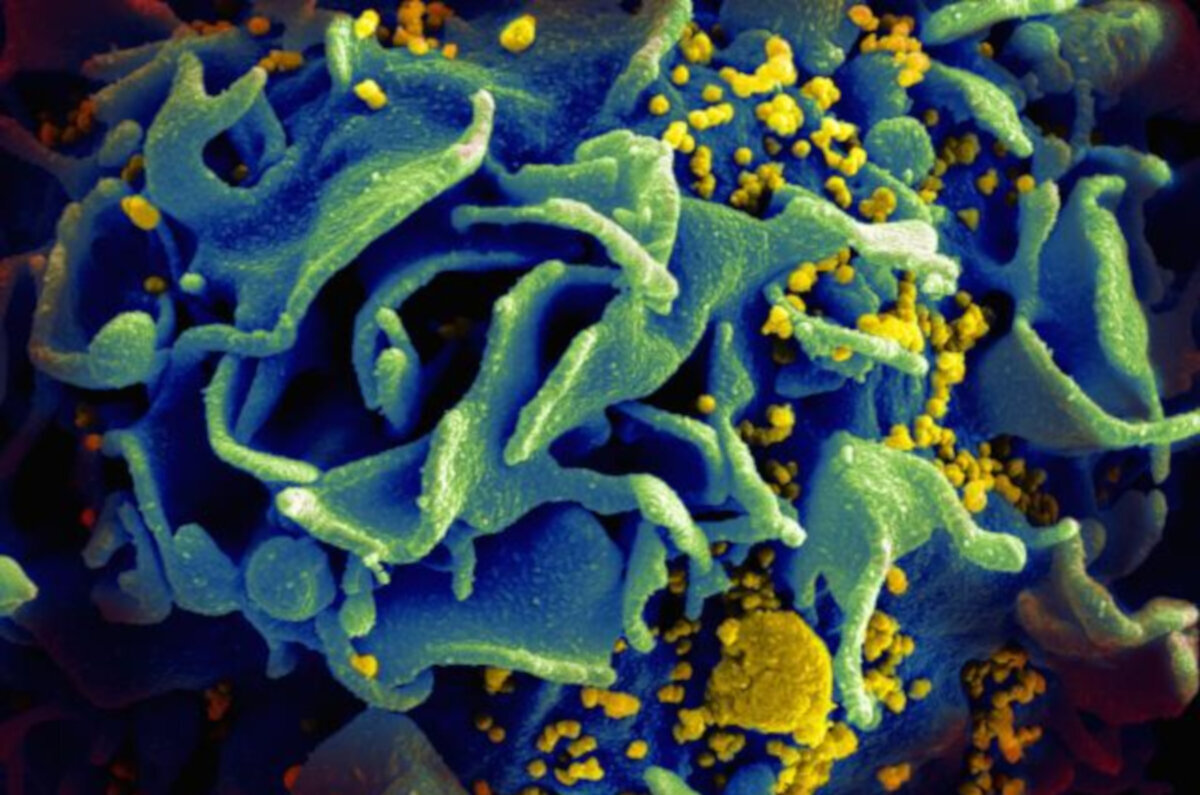
The vast majority of children living with HIV today are in sub-Saharan Africa.
]]>
People living with HIV in small towns are still struggling to tell their community because they are worried they might be treated differently.
Advocates are calling for more specialist services to help those living in regional areas who do not have access to the same support networks as those available in cities. Read More
]]>